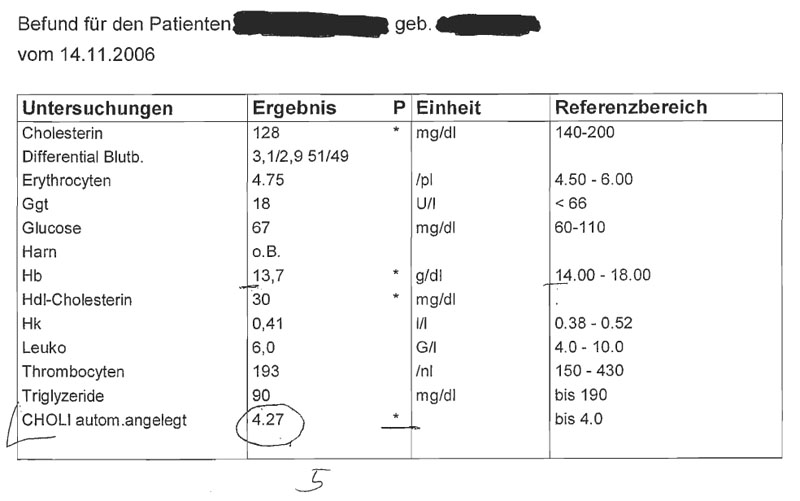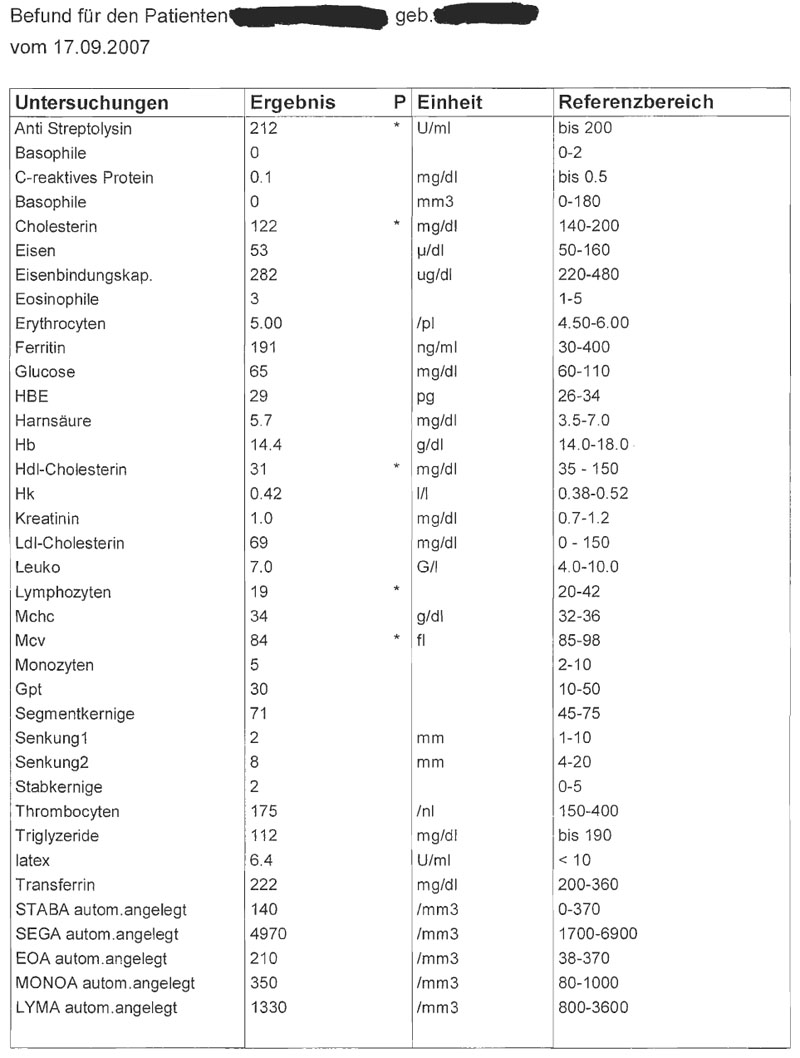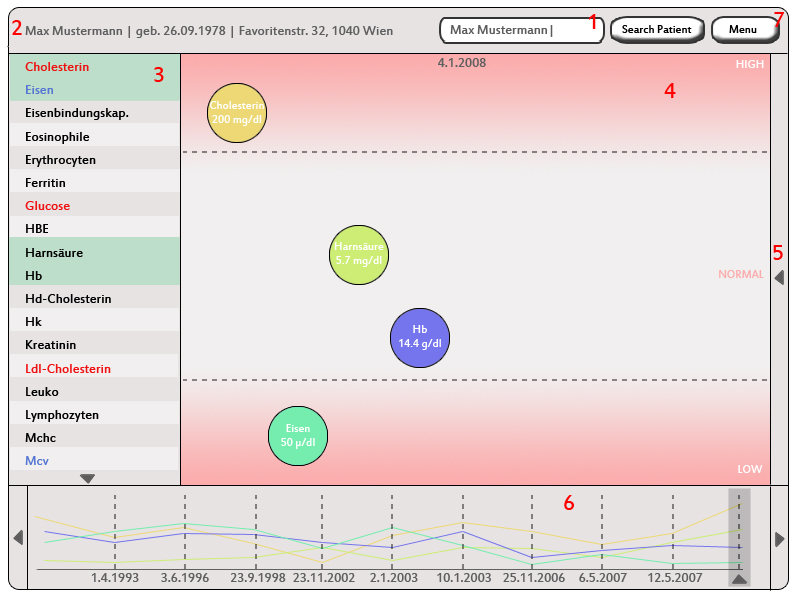Teaching:TUW - UE InfoVis WS 2007/08 - Gruppe 07 - Aufgabe 4
Assignment description
Description of the fourth task
Assigned data / model
Analysis of the application area
Our sample data belongs into the medical field of application. We are dealing with diagnostic findings which are basically sets of multiple tests that play a supportive role in doctors' decisions about the diagnosis. Given these two examples we can see that the second finding holds multiple times as much data as the first one. This indicates that each patient has a specialized set if tests that has been chosen for him by his doctor.
The data has been arranged into four columns. The first column holds the name of the test or the name of the subject the patient has been tested on. The second column holds the outcome of the test. In all cases we can see here, we are dealing with numbers. But some of these numbers are floating point numbers, others are integers. One of these tests even returns multiple values as result. Some of the cells in this column have been marked using the star character (*). This indicates that a value does not lie in an interval specified in the fourth column. The third column specifies the units of the results. The fourth column specifies the reference values for each of these tests, i.e. an interval that specifies acceptable values for this test. Multiple forms of intervals are being used, e.g:
- bis 200
- 220-480
- <66
The data is sorted ascending using the first column (the name of the test). None of the values can be classified as nominal or ordinal. We are only dealing with floating point numbers (continuous) and integers (discrete). There is also no hierarchy in this data. It's actually a list of key value pairs where the value-part can contain one or multiple values and an information about the units used and reference.
But the use of diagnostic findings in practice is slightly different. They are not being used as standalone tables with some test results. The values are being examined how they change in time. This fact changes the dimensionality of all data (test key-value-pairs) from 1-dimensional to 2-dimensional because they usually change over time. This is the main issue why we would suggest a different presentation of this data in a more clearer, simpler and legible way.
Target group
The target group (the data has been produced for) is definitely hospital/medical staff. We think that the most common people can't start anything with this data. They can basically determine which test results don't match the reference interval and therefore didn't go well but this data needs to be interpreted by a specialist. Another thing is that this data is private and should therefore not be seen by anyone except for the doctor and the patient.
Diamont application
Our application
- 1 Jakob
- 2 Jakob
- 3 Jakob
- 4 Peter
- 5 Martha
- 6 Peter
- 7 Martha
XXX REMOVE FROM HERE XXX
Aufgabenstellung
Aufgabe ist das Design einer interaktiven Visualisierungsapplikation zur Darstellung und Exploration
(des zeitlichen Verlaufs) von Laborwerten einer Blutuntersuchung. BenutzerInnen, Einsatzzweck, Tasks, etc.
sollen von Euch selbst festgelegt und beschrieben werden.
Beispiele für derartige Datensätze
XXX REMOVE TO HERE XXX


